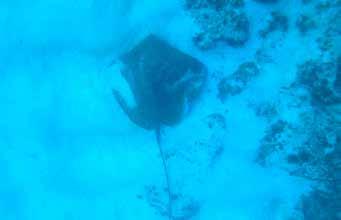
1 minute read
The froggy version of a pug: Rain frogs
The froggy version of a pug: Rain frogs
By Dr Anina Lee
Advertisement
Rain Frog became an internet sensation when photographer Dean Boshoff videoed the little round golf-ball sized creature. In the video, the Desert Rain Frog does not look happy, but then these frogs never do. It emitted loud squeaks, puffed itself up like a balloon, took a defiant stance on its puny little legs and, together with its disgruntled face, presented a very comical sight indeed. The video has had over 20 million hits.
Generally, I am not in favour of disturbing wildlife, but sometimes a photo opportunity serves a positive purpose in focusing attention on an aspect of nature, in this case, the rain frogs of Southern Africa. They are indeed a fascinating group of frogs.
Rain frogs are endemic to Southern Africa. That means that they are found "nowhere else on the planet", as the wildlife documentaries repeatedly tell us. There are 13 species of rain frogs, of which two occur in our Whale Coast area. These are the Sand Rain Frog (Breviceps rosei) and the Cape Mountain Rain Frog (Breviceps montanus).
All rain frogs are rather comical-looking. Breviceps means ‘short head’, and it's plain to see why. They are round and fat with short legs and squashed faces, a bit like a froggy version of a pug. But the most distinctive feature is the thin, down-turned mouth, like a child's imitation of someone looking sad.
The Afrikaans common name, blaasoppie (blow-up), refers to these animals' habit of inflating their bodies into a ball. They do this when they are alarmed or feel threatened.
Rain frogs occur in many different habitats, from mountain forest to deserts. They spend most of their lives buried underground, or in scientific jargon, they are fossorial, i.e. burrowing animals. They burrow backwards, using their hind limbs to excavate the earth while slowly rotating as they dig deeper. For this function, there is a unique digging adaptation of the hind limbs.
Once snugly nestled in an underground chamber, they don't aestivate (hibernate) but rather hide from the harsh elements. They will eat any worms or insects that might come their way underground.
Click on the newspaper below to read more (see page 22).










